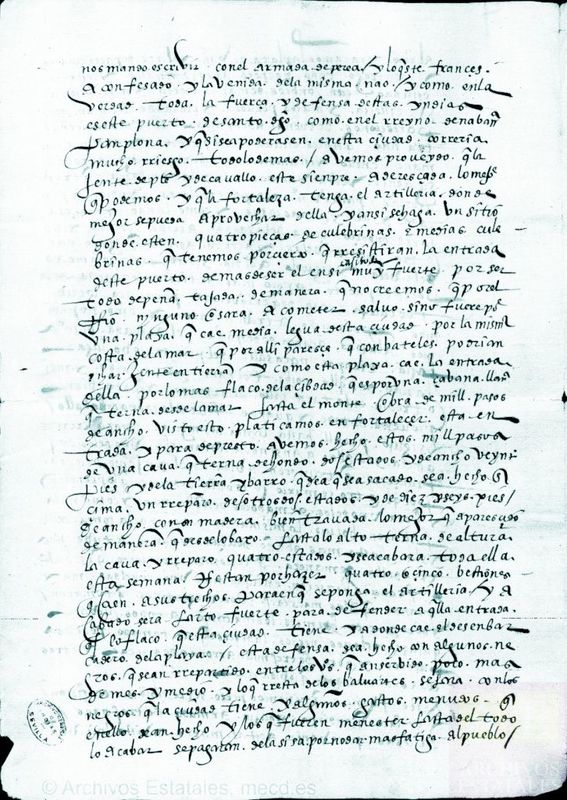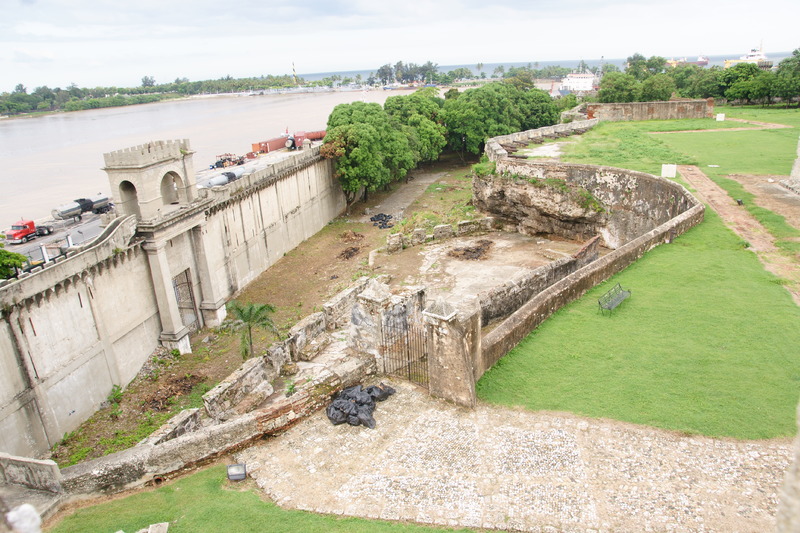Enslaved black labor was essential for the defense of Santo Domingo City (1538)
TRANSCRIPTION
ENGLISH TRANSLATION
we were ordered to write with the army of Perea and what this French man has confessed, and the arrival of the same ship and since all the force and defense of these Indies is in fact this port of Santo Domingo, like in the kingdom of Navarra Pamplona. And if they took control of this city, all the rest would be much at stake. We have provisioned that those people on foot and horseback are to be always prepared the best way we can, and the fortress to be equipped with artillery placed where we can make the best use of it, and so make room for the four pieces of culverins and half culverins and we are certain that they will resist the access to this port, besides it being [in between lines: almost all] very strong for it is made of rock and carved in such way that we are certain that no one will dare to pass through the river, unless it was through a beach about half a league from this city, through the sea coastline, which apparently people can hit land on small boats. And since the entry of this beach is facing the narrowest part of the city, which consists of a plain livestock land that goes from the sea to the hill, about a thousand steps wide, after seeing this, we discussed about strengthening this entry, and very soon we will have done a pit of a thousand steps that will be fourteen feet deep and twenty feet wide. And from the soil and mud resulting from it, a rampart will be made of also fourteen feet and sixteen feet wide fastened with wood, the best one ever. This way, both pit and rampart will be twenty eight feet high from the bottom and will be completed this week. There are still four or five bastions to be made for the artillery and, when finished it will very strong for defense the weak access this city has and which leads to the quay of the beach. This defense has been done with some Blacks distributed among the residents and who have served about a month and a half. And what is yet pending for the bastions will be done by the Blacks in the city and some minor expenses incurred and those that may be necessary in order to complete the whole thing will be paid out of the excise to make things easier to the people
Commentary
The Audiencia judges of 1538 La Española praised the port of Santo Domingo as being “the fortification and defense of these Indies” claiming that, if enemies were to take it, “everything else would be at risk.” They were confident that the natural structure of the city’s port, flanked by two rocky heights, allowed to prevent enemy ships’ access to the city. The flatlands west of the village were considered easy to conquer from the coasts and therefore a weak flank of the town’s defenses.
City officials reported to the Crown that a ditch had been dug about twenty feet wide along the entire defensive distance and a wooden wall built at the upper edge of the ditch. They were also building four bastiones along the same end of the city.
Three decades after the reference to enslaved Blacks being used to build the defensive walls of Santo Domingo, Black laborers were still fundamental to the defense of La Española.


